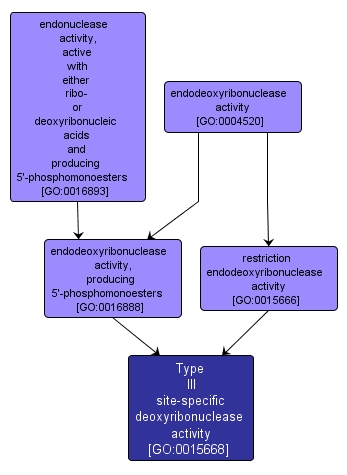| Desc: |
Catalysis of the endonucleolytic cleavage of DNA to give double-stranded fragments with terminal 5'-phosphates. ATP hydrolysis is required. Cleavage is dependent on the presence of two copies of a specific recognition sequence in an inverse orientation in the DNA. Cleavage occurs at a specific distance from one of the recognition sites. |














